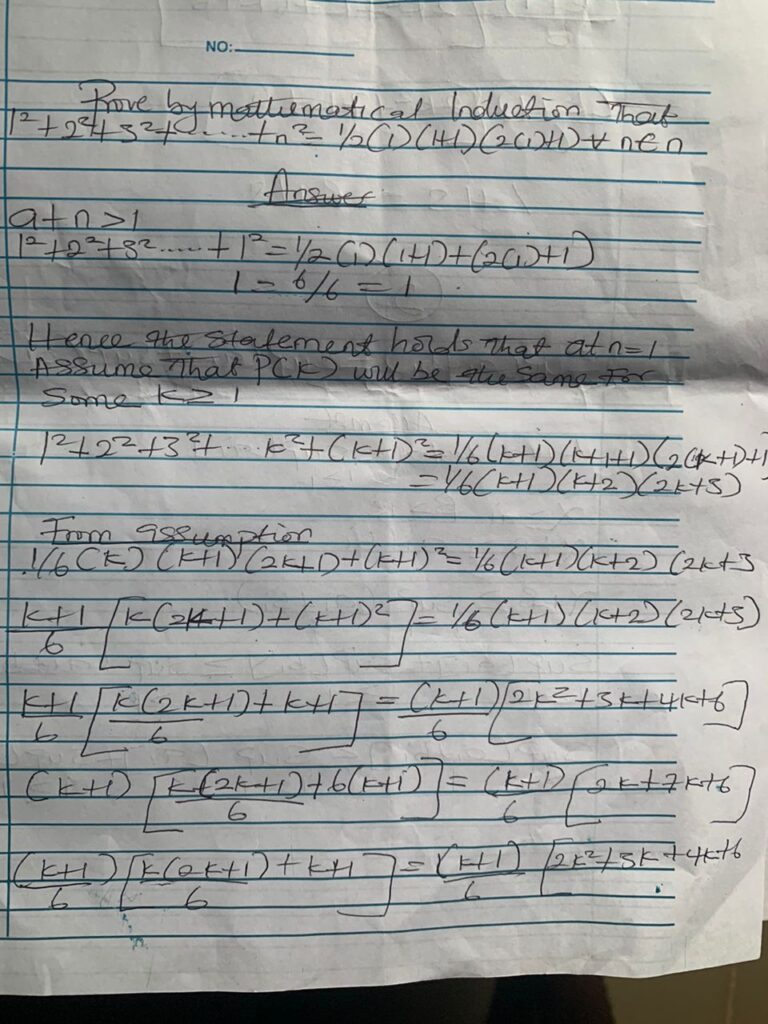CSC 323 Assignment Solutions (Deadlock)

Assignment Update ✅
Course Code: CSC 323
Question
- Draw and Explain The Following conditions of deadlock
-Circular Wait
-No premption - Explain how to handle deadlock
- Explain how to detect deadlock
CSC 323 Assignment Solutions (Deadlock)
1. Draw and Explain the Following Conditions of Deadlock:

Circular Wait: In a circular wait condition, multiple processes are each waiting for a resource that is held by another process in a circular chain. For example, Process A is waiting for a resource held by Process B, Process B is waiting for a resource held by Process C, and Process C is waiting for a resource held by Process A. This forms a circular chain of dependencies, leading to a deadlock situation where none of the processes can proceed.

No Preemption: In a situation of no preemption, resources cannot be forcibly taken away from processes. This means that if a process is holding a resource and needs another resource currently held by another process, it cannot forcibly take that resource, leading to potential deadlock. For example, if Process A is holding Resource X and needs Resource Y held by Process B, and Process B is holding Resource Y and needs Resource X held by Process A, they will be deadlocked because neither can proceed without the other releasing its resource voluntarily.
2. Explain How to Handle Deadlock:
There are several approaches to handle deadlock:
- Prevention: Design the system in such a way that at least one of the necessary conditions for deadlock cannot occur. This could involve careful resource allocation, avoiding circular wait situations, and allowing preemption of resources.
- Avoidance: Use algorithms that dynamically analyze resource allocation requests to ensure that deadlock can be avoided. Examples include the Banker’s Algorithm and resource allocation graphs.
- Detection and Recovery: Implement algorithms to periodically check for deadlock. If a deadlock is detected, take actions to recover from it, such as terminating some processes, rolling back transactions, or preemptively releasing resources to break the deadlock.
- Ignorance: Some systems choose to ignore deadlock entirely, assuming that it will occur infrequently enough to not significantly impact system performance. This approach is often used in real-time systems where predictability is more critical than avoiding occasional deadlocks.
3. Explain How to Detect Deadlock:
Deadlock detection involves periodically examining the state of the system to determine if a deadlock has occurred. Here’s how it can be done:
- Resource Allocation Graphs: Maintain a graph representing the current allocation of resources to processes and the waiting relationships between them. Deadlocks can be detected by looking for cycles in this graph.
- Wait-for Graphs: Similar to resource allocation graphs, but focused on representing the waiting relationships between processes. Deadlocks are detected by identifying cycles in this graph.
- Deadlock Detection Algorithms: Use algorithms like the Banker’s Algorithm, which simulates resource allocation to identify whether a state leading to deadlock exists. If a deadlock is detected, appropriate actions can be taken to resolve it.
These methods help in identifying whether a deadlock has occurred in the system so that appropriate actions can be taken to resolve it and ensure the smooth operation of the system.






